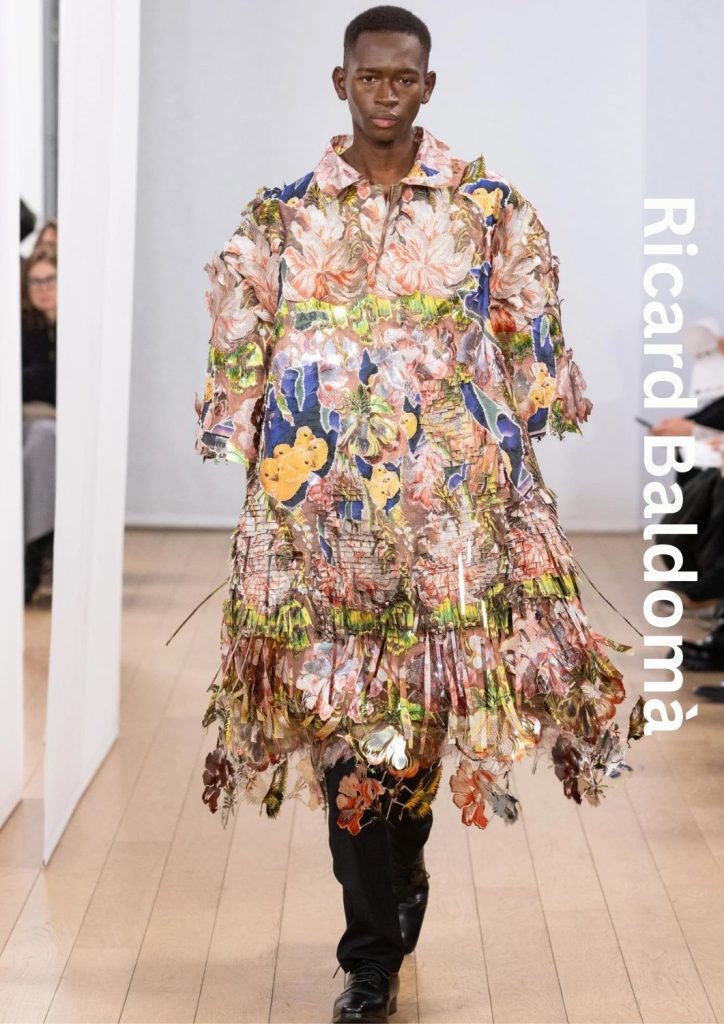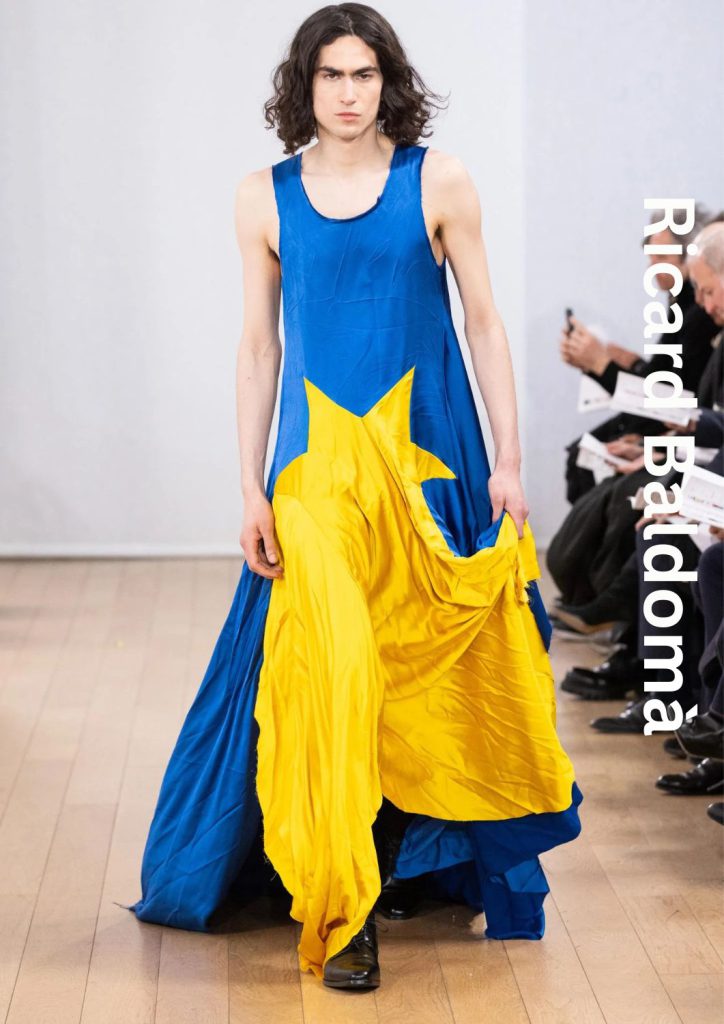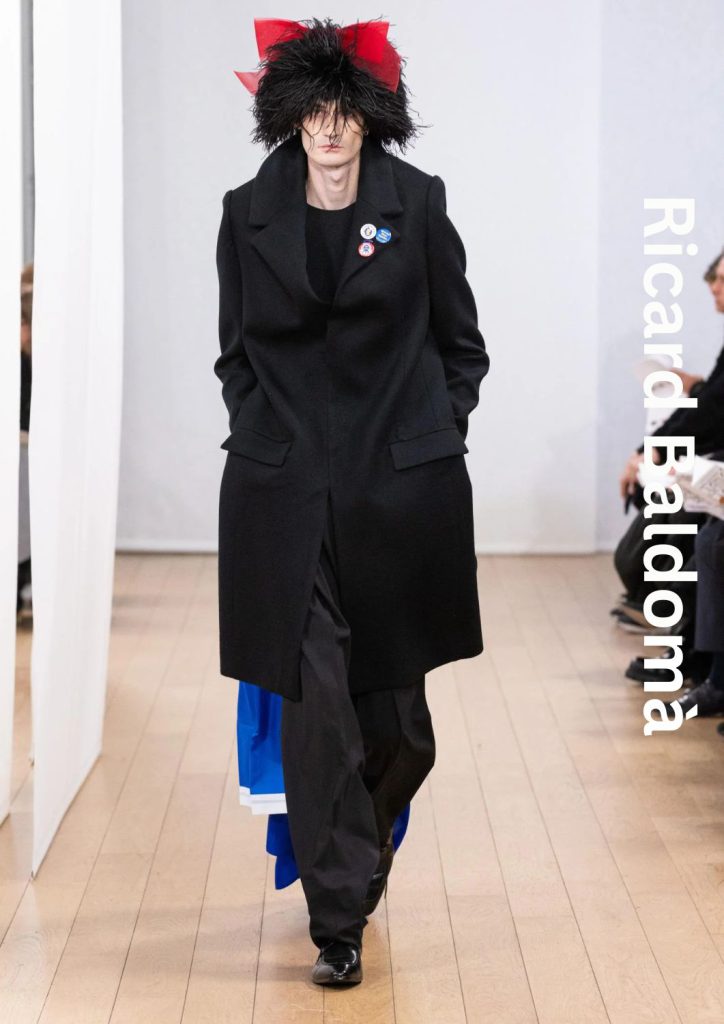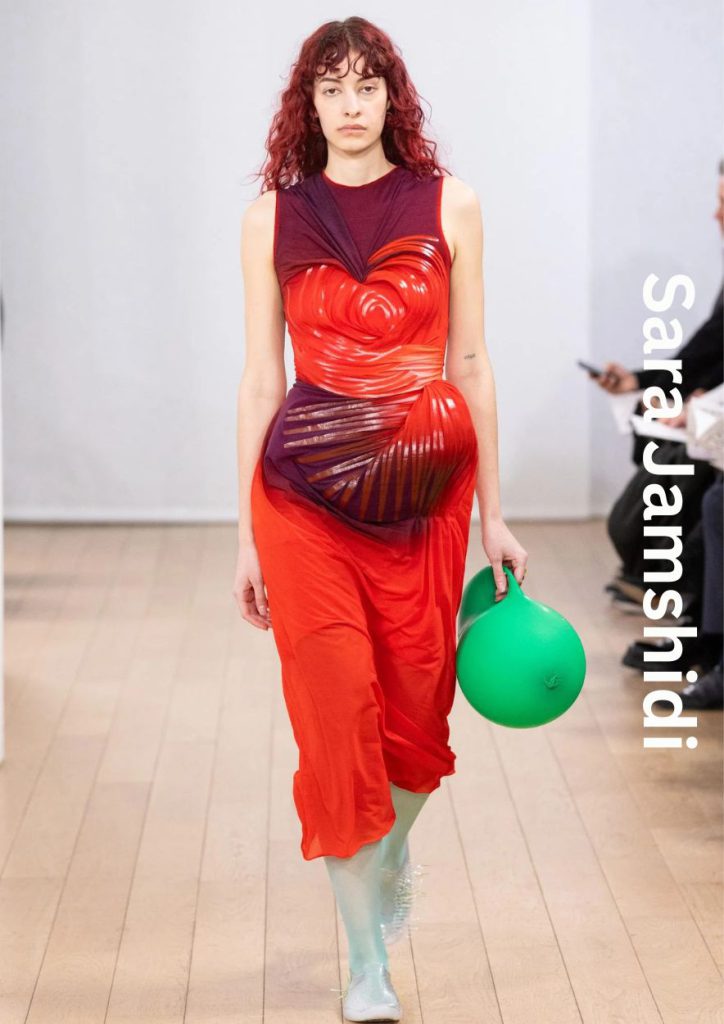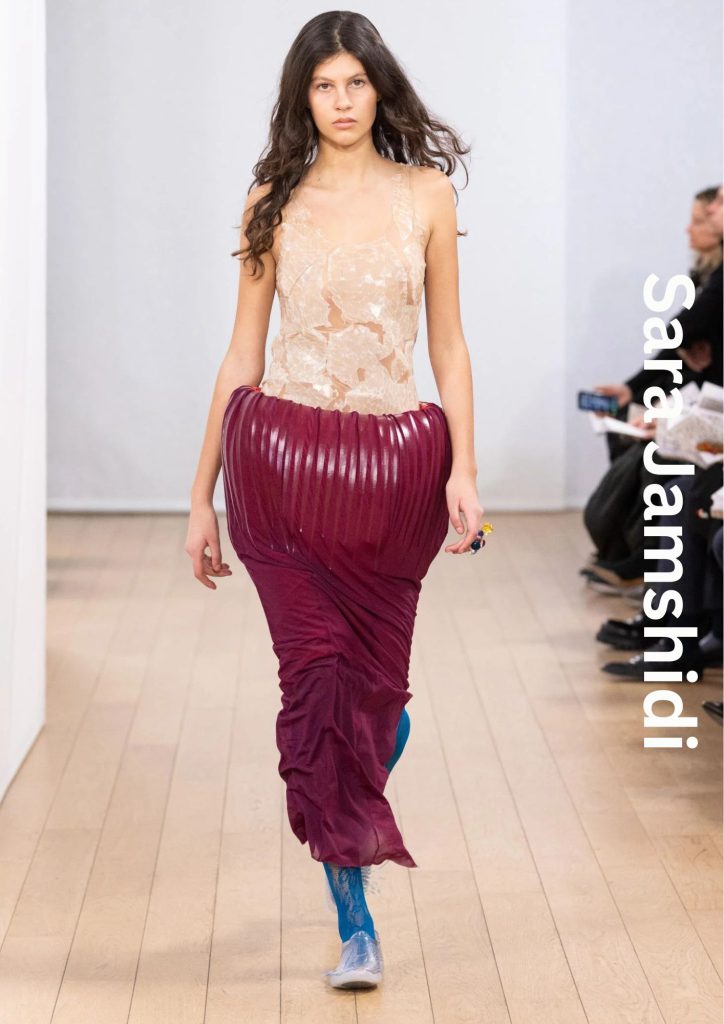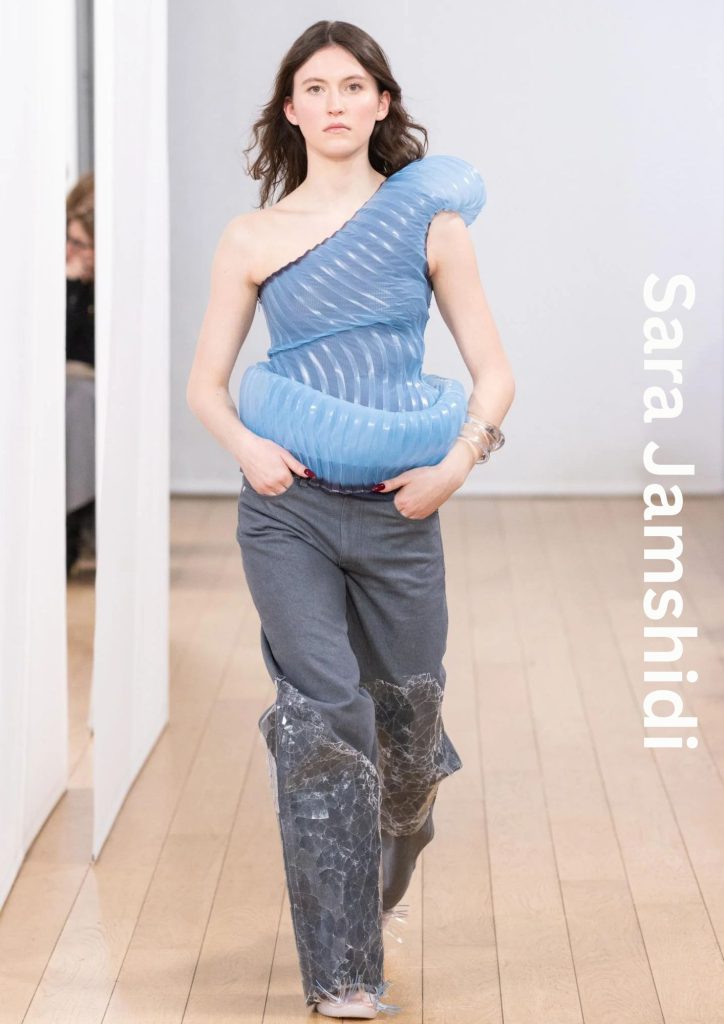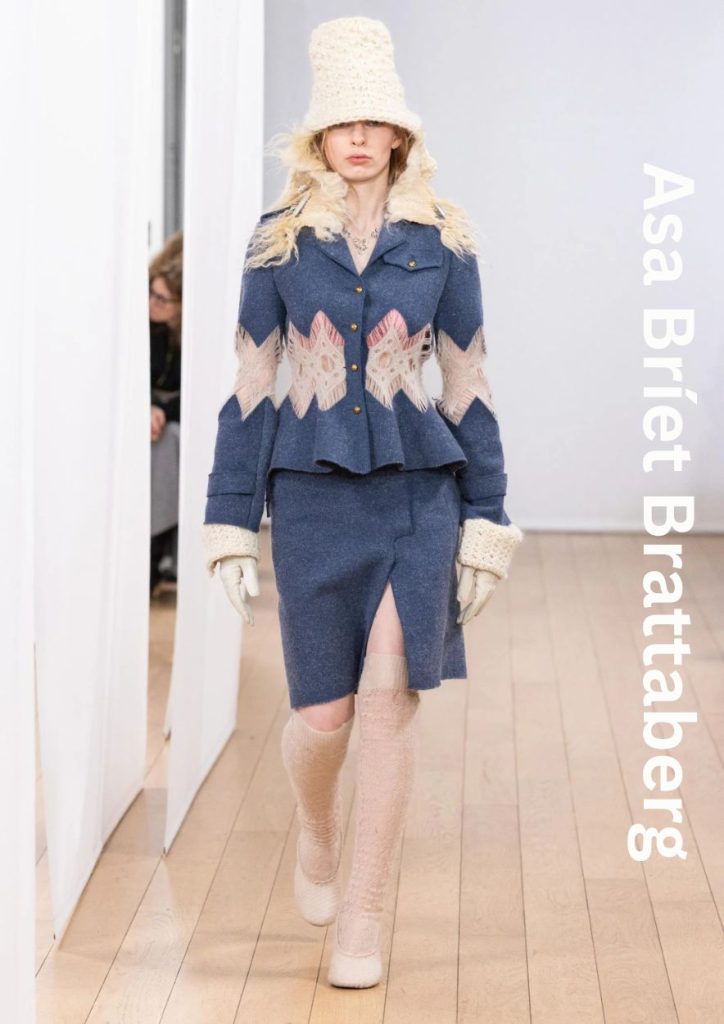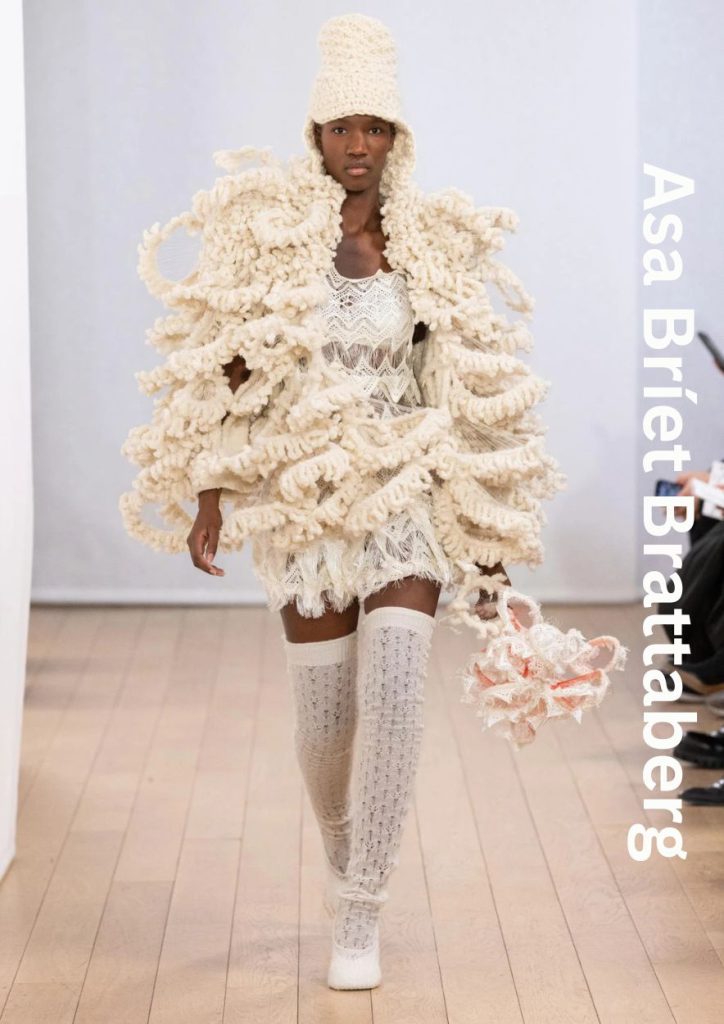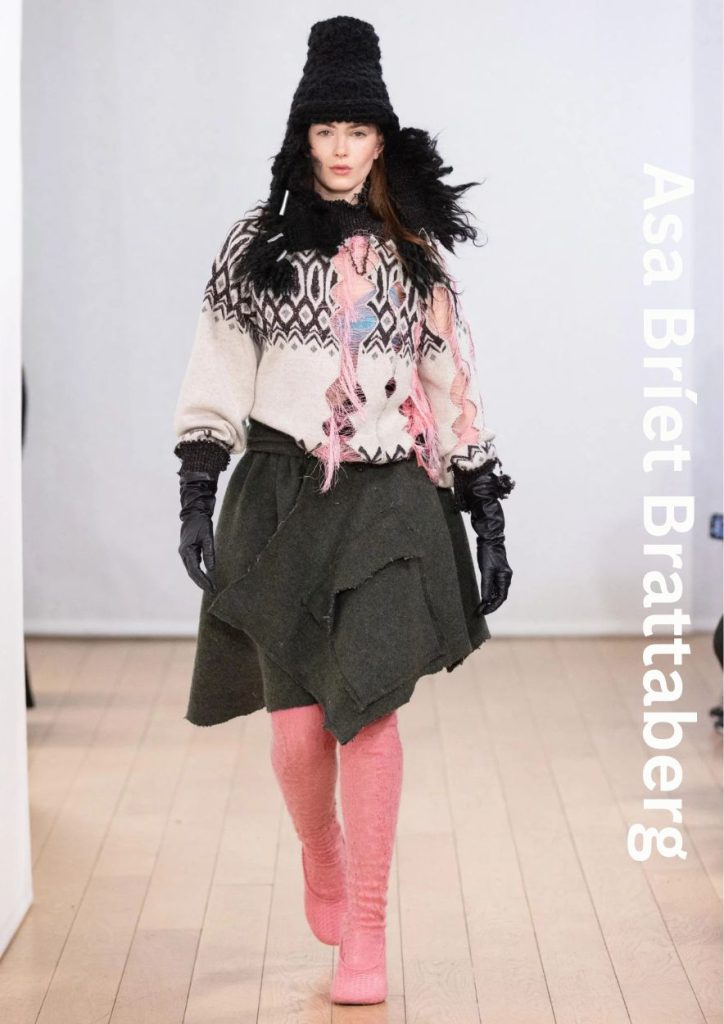DATE: 3rd March 2025. PLACE: Paris Fashion Week. TIME: 16.00
IFM’s MA Class of 2025 graduation show presented 26 students, 16 fashion designers and 10 knitwear students, with each student presenting six unique designs that reflected their diverse cultural backgrounds, drawing inspiration, common themes explored in their collections included sustainability in fashion, social politics, and the preservation of cultural heritage.
While our world remains immersed in post-pandemic and political bleakness, these students beam with diverse, unfaltering talent. With experimentation being the connecting thread between all the collections, this year’s graduates presented craft-heavy pieces, with strong intellectual backdrops. Inspired by a vast array of references, it seems that the students were pushed to take risks and embrace their failures as the most crucial part of their process. It was refreshing to see garments that were not created to meet certain expectations, as this generation does not try to answer the question:
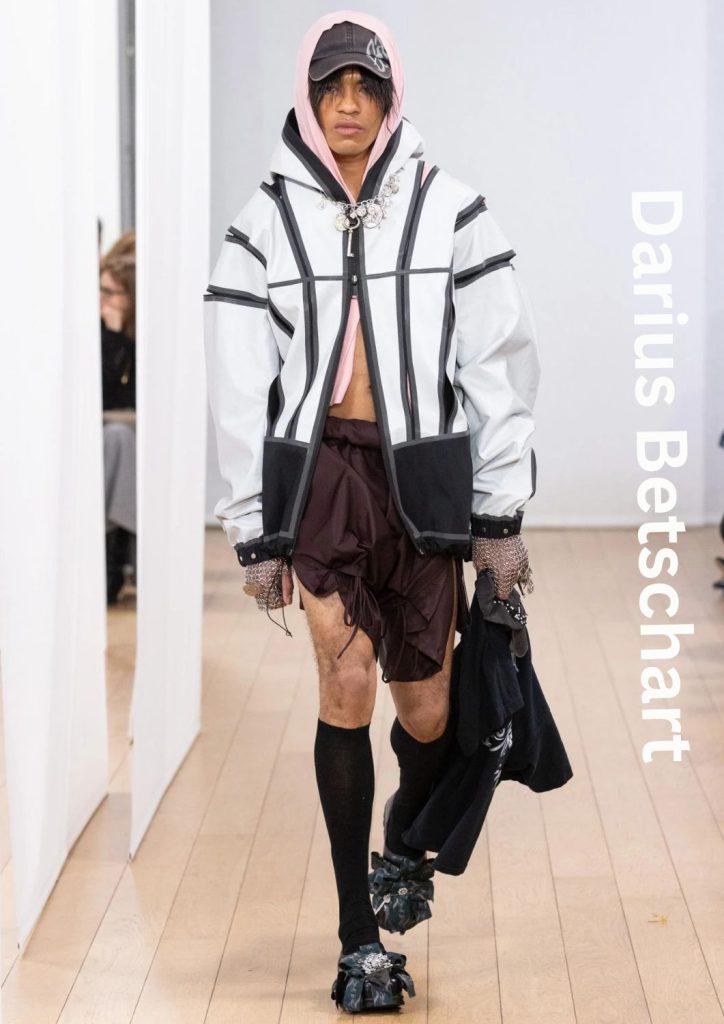
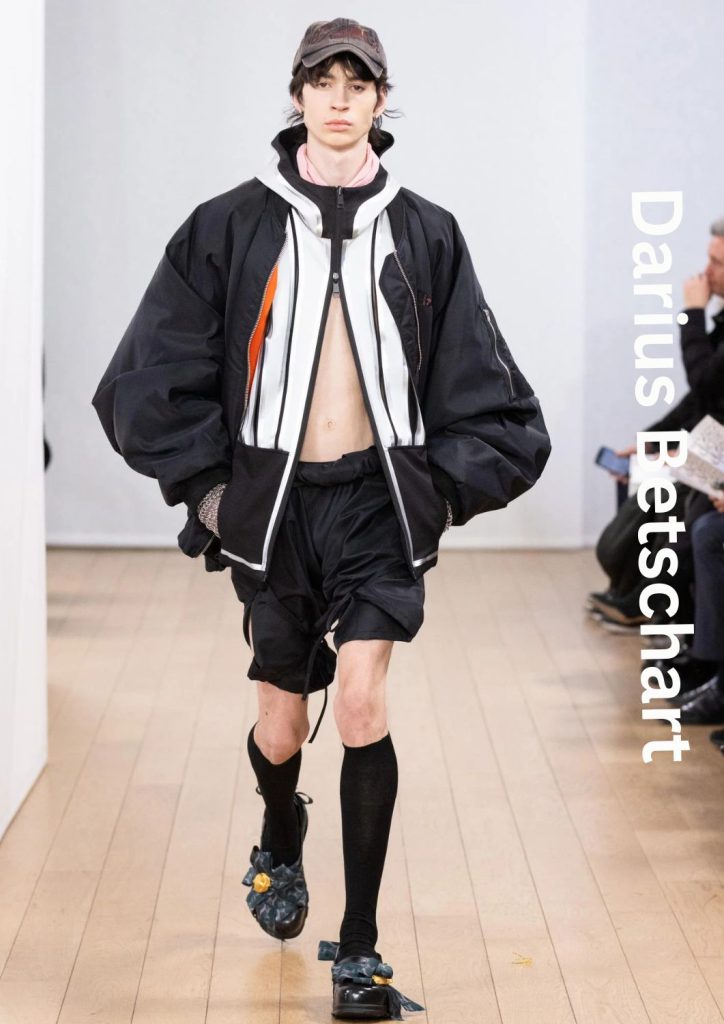
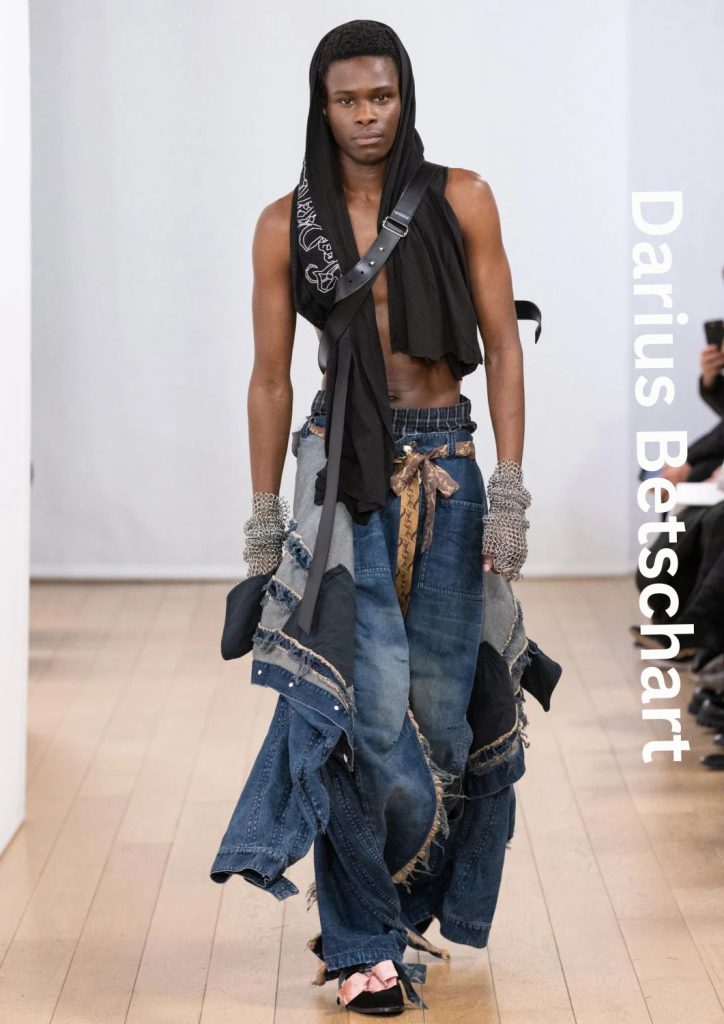
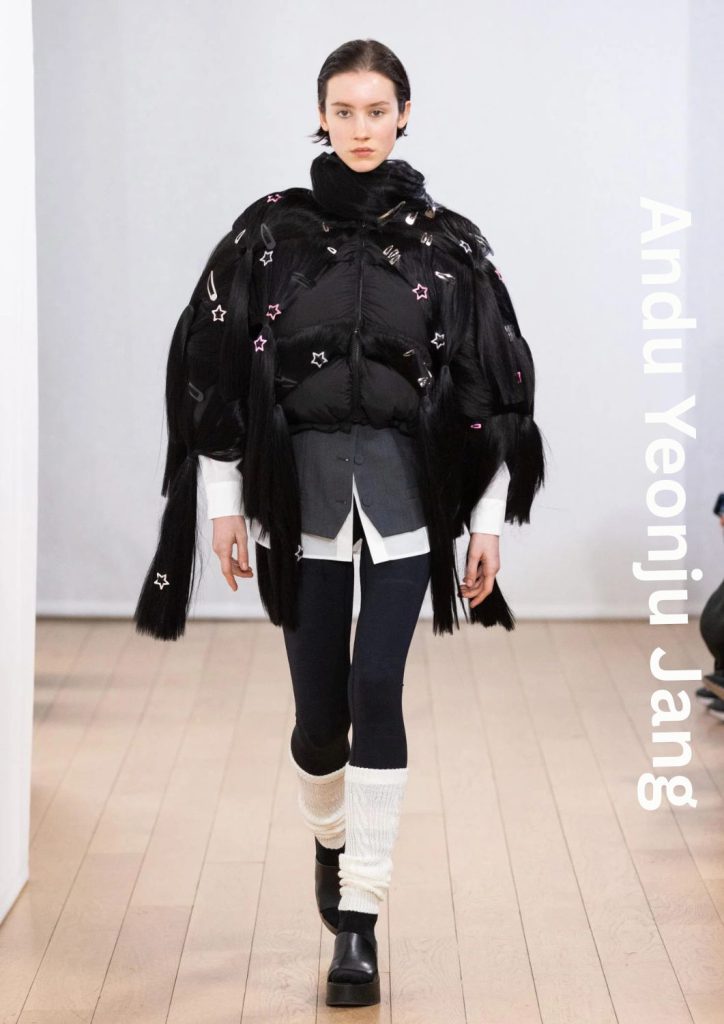

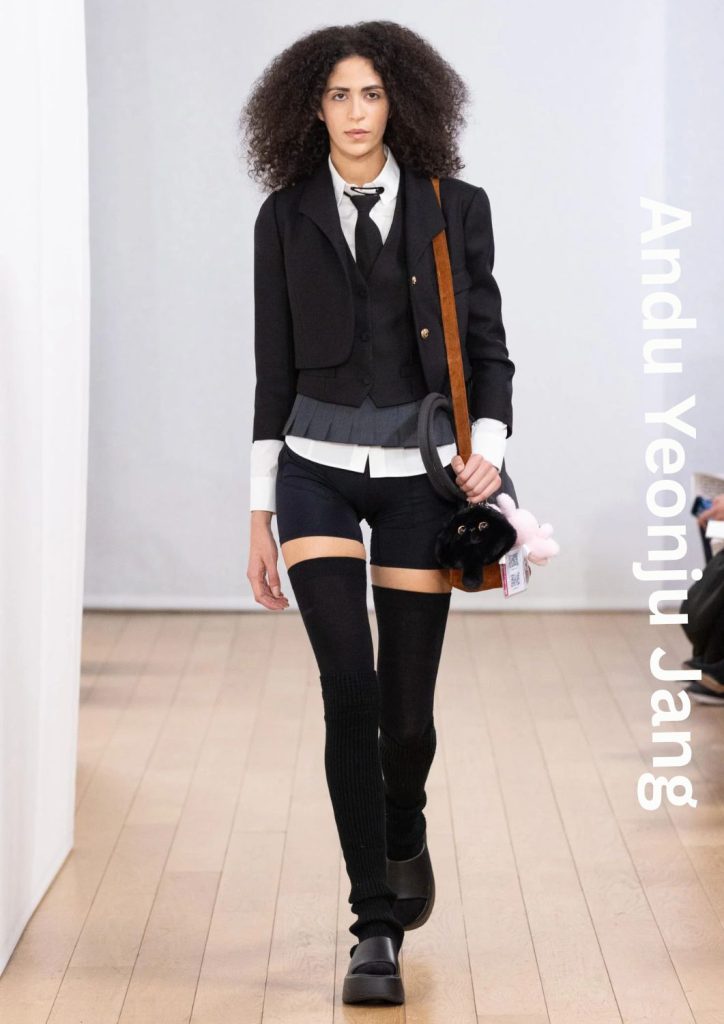
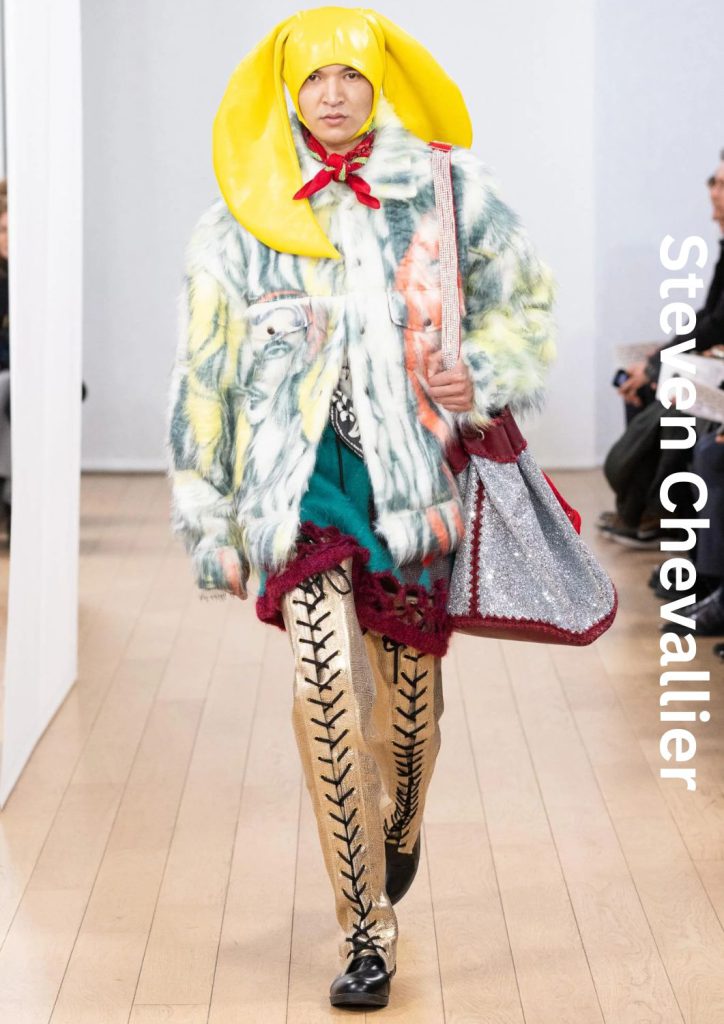
Steven Chevallier addresses with this collection is quite serious. “It explores the persecution of the queer community by conservative movements, both historically and in the present. It focuses on pivotal moments such as the HIV crisis, the Stonewall riots, and the work of artists like Derek Jarman,” Chevallier says. “I want to honour and celebrate those who have fought and continue to fight for queer rights.” Chevallier’s collection mostly does so through knitwear, whose prints and designs pay homage “to queer activism through the logos and campaigns inspired by activist movements from the 80s, such as ACT UP and OutRage.” Neon slogans and logos are knitted, printed and tufted onto equally bright garments, such as coats and knits. Styling and accessories are symbolic, too, as illustrated by the animal ears. “They reference the Middle Ages, a time when so-called ‘crazy’ people would wear animal hats. For me, this represents how queer people are often labelled as ‘crazy’.” Starting an internship at Dior, Chevallier looks back fondly at IFM. “I had the chance to fully explore my creativity and to deliver an important political message. As designers, I believe we have a responsibility to engage with the harm that society can inflict, particularly on our rights as queer creatives. I hope to continue working in this direction, connecting creativity, craftsmanship, and activism.”
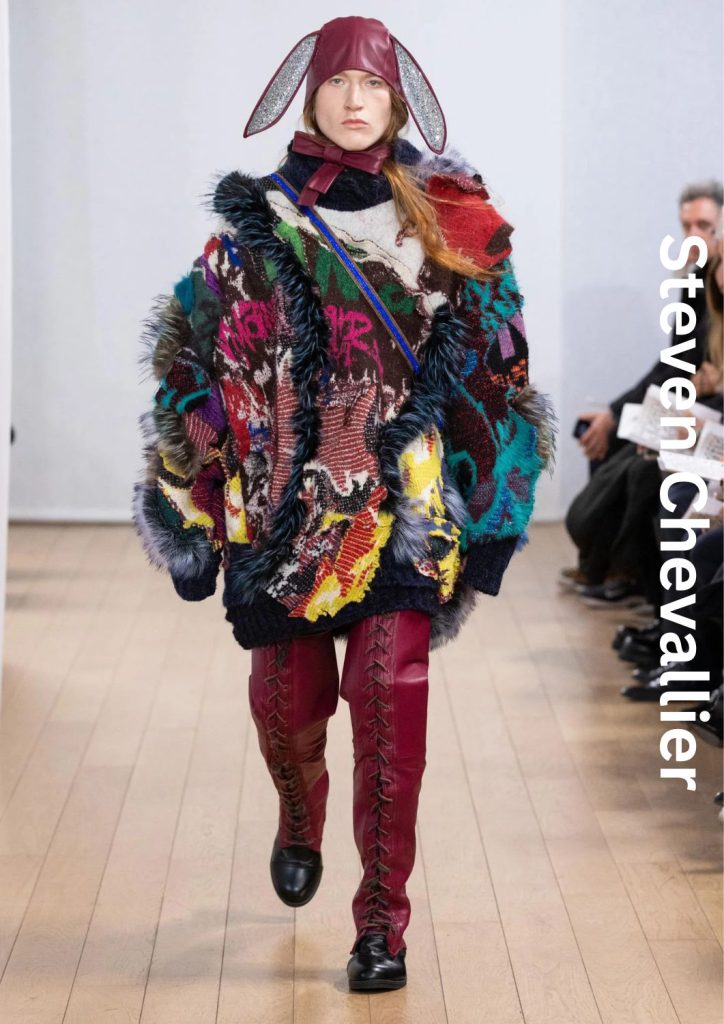
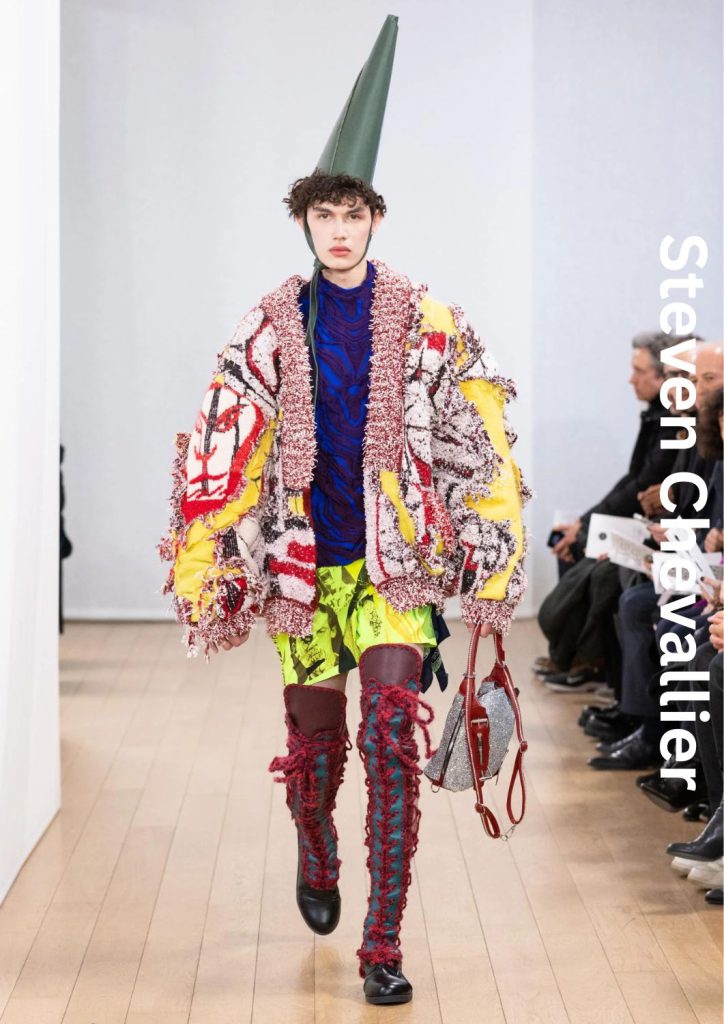
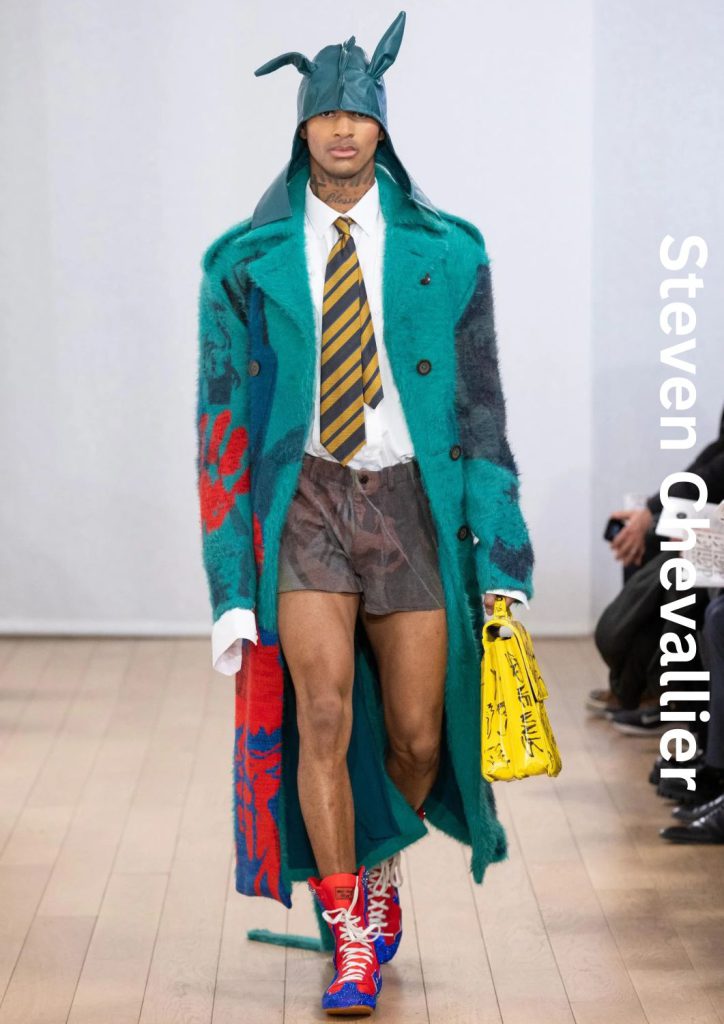
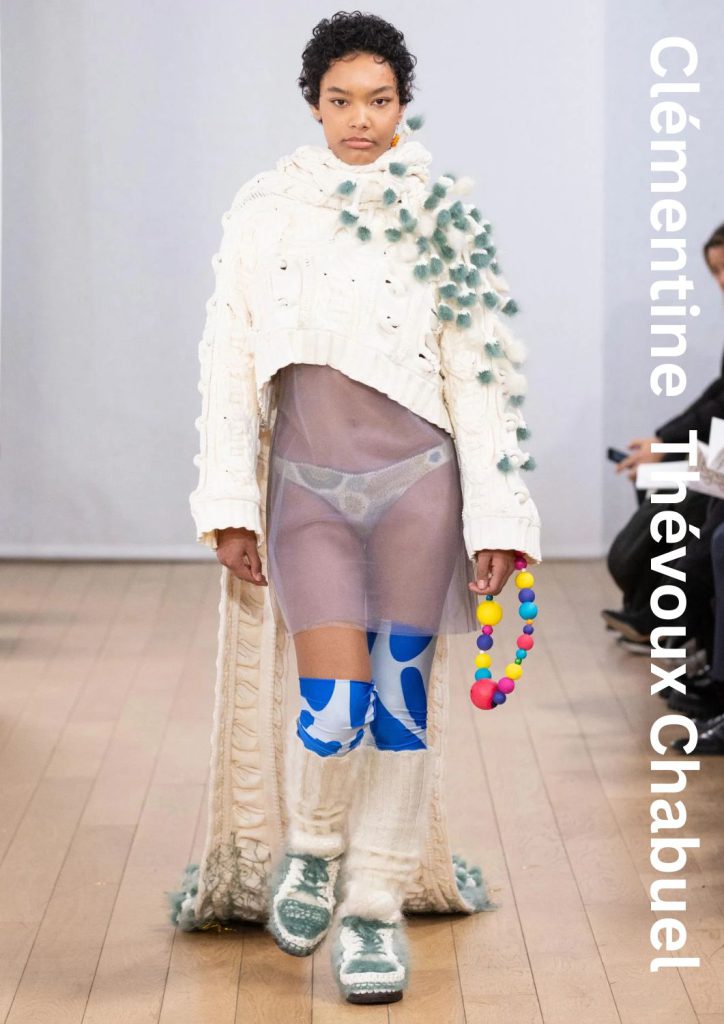
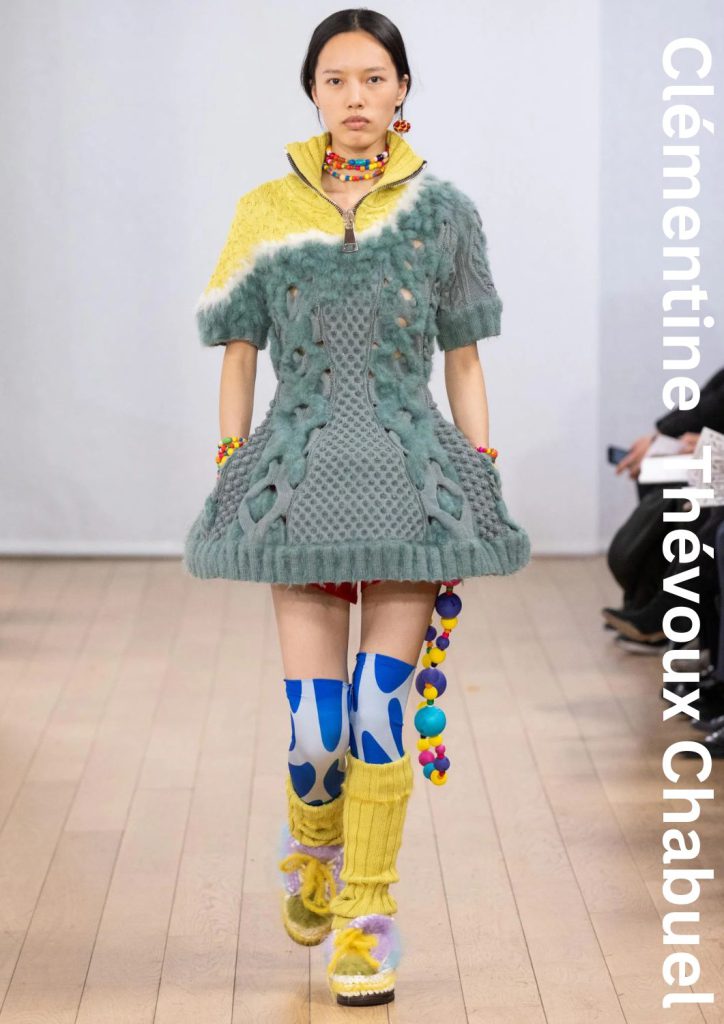
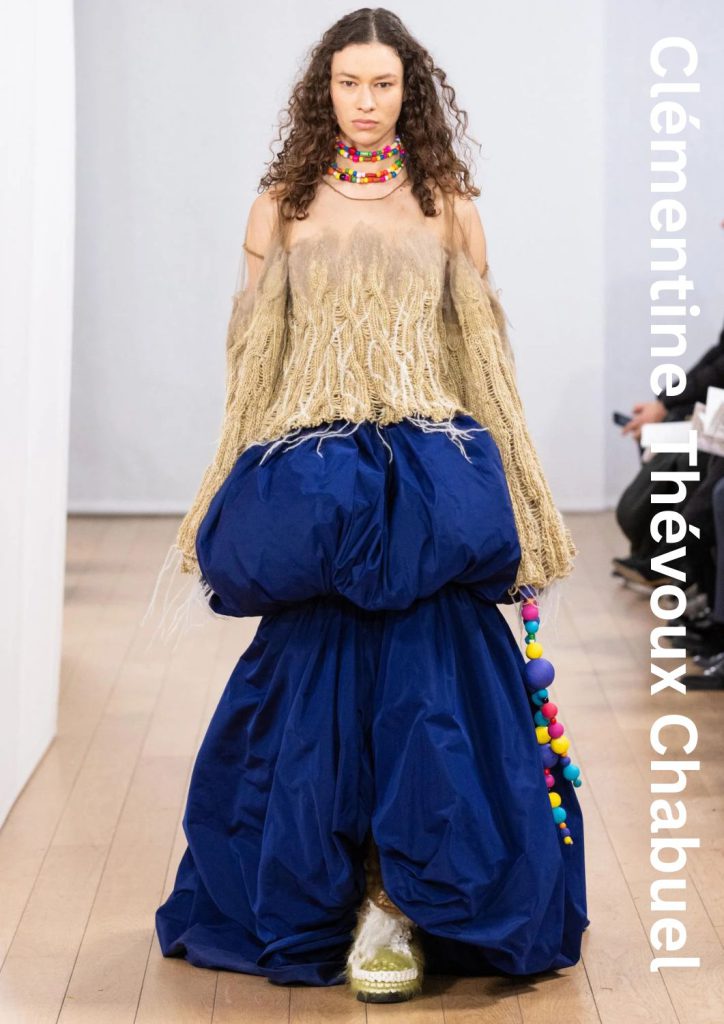
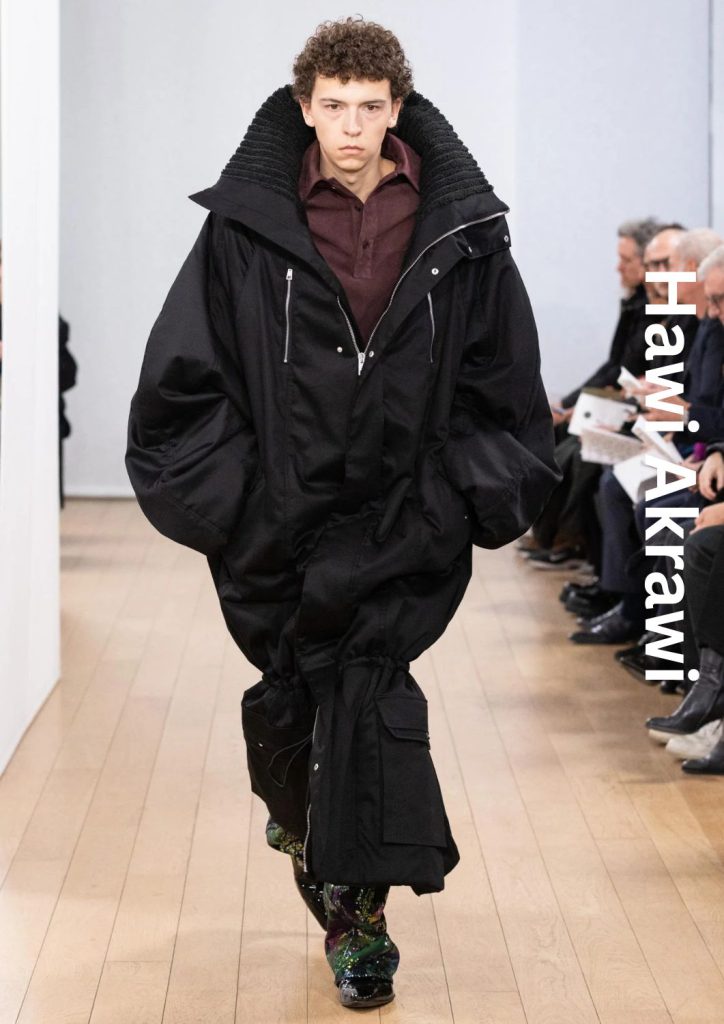
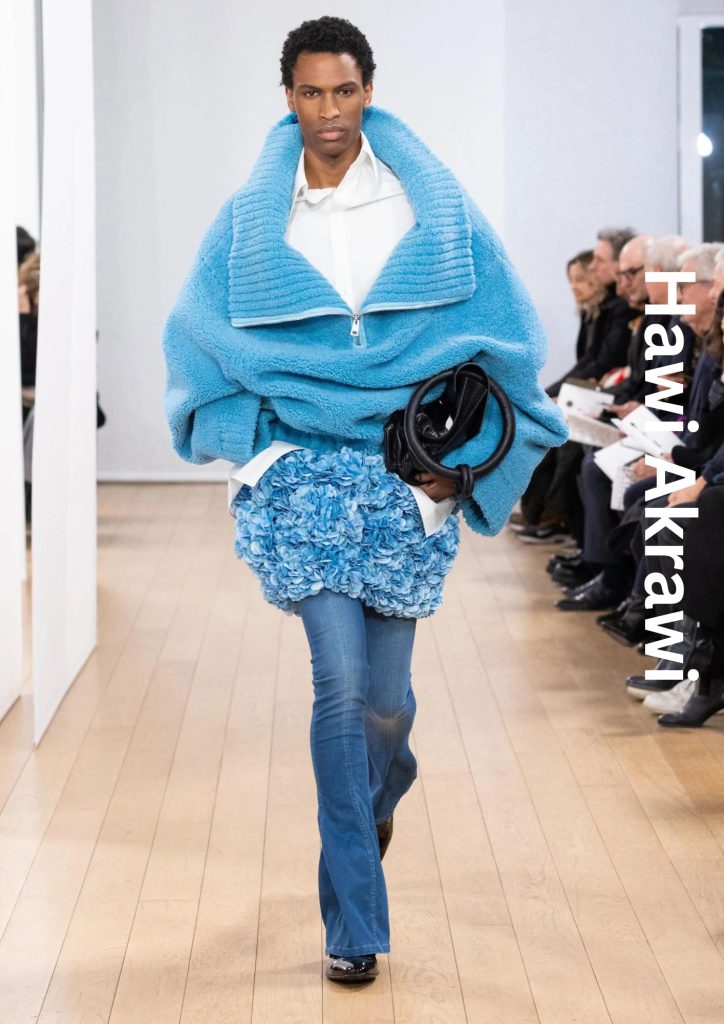
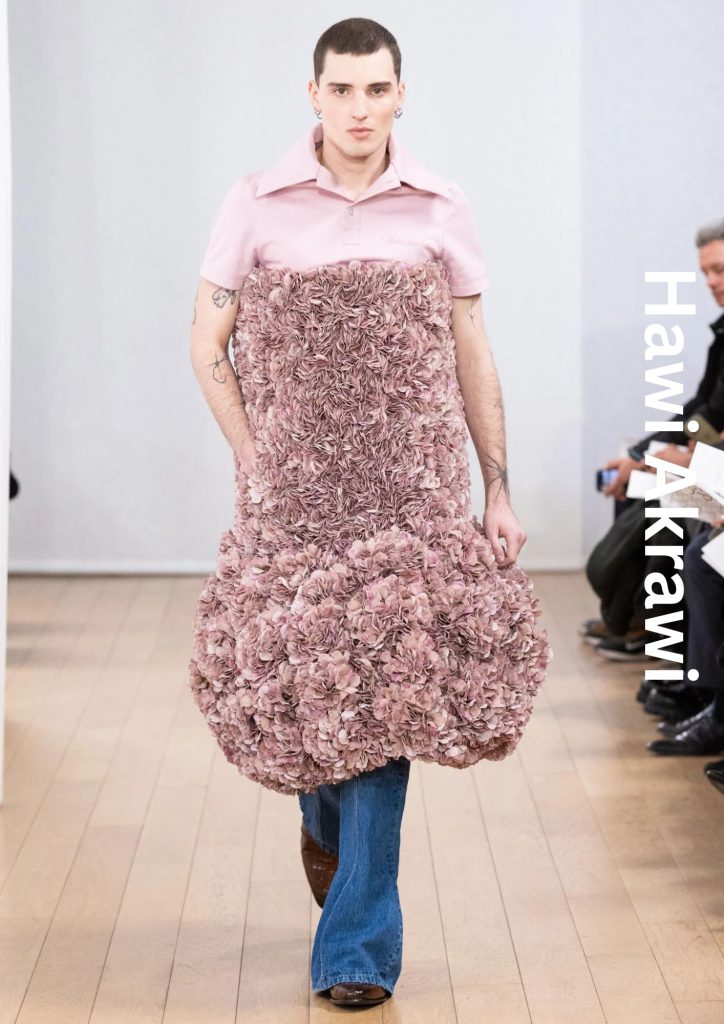
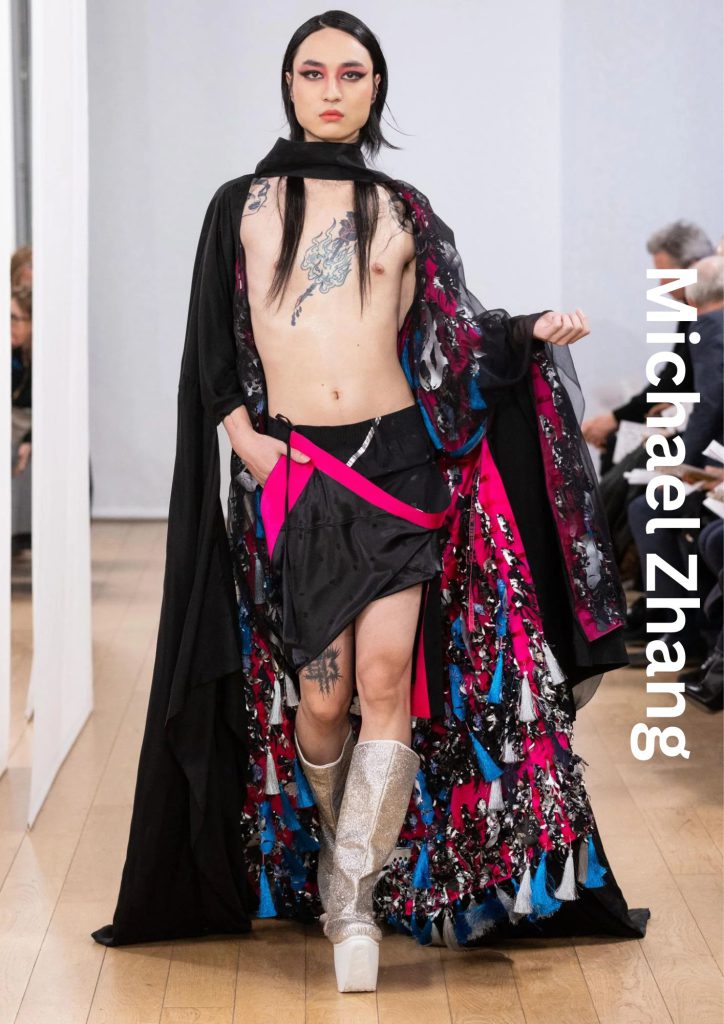
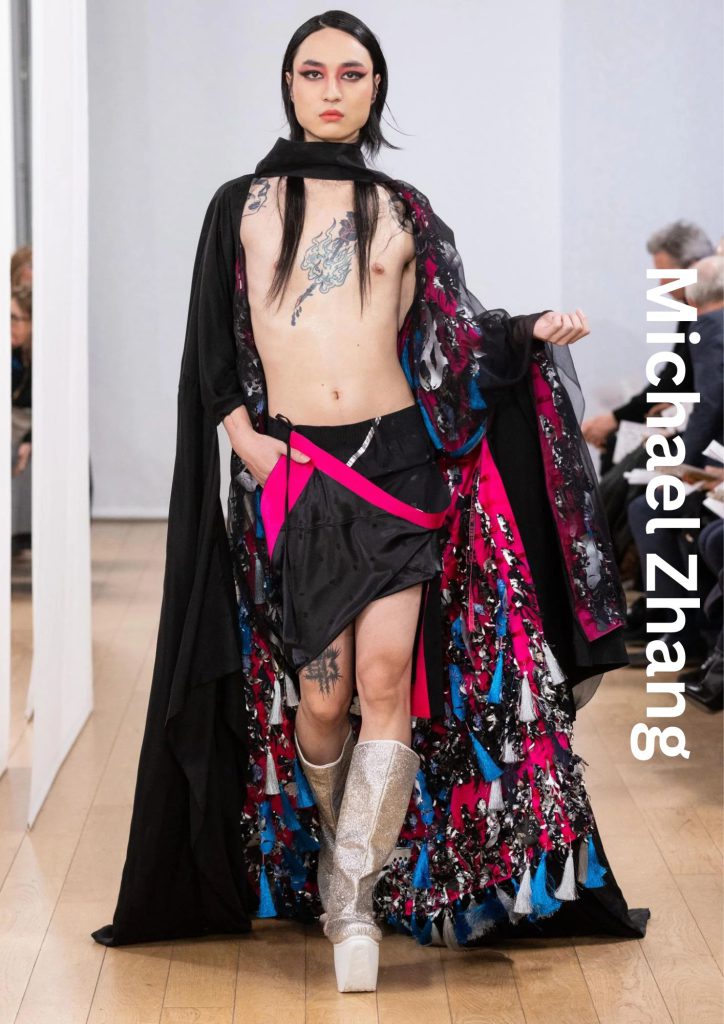
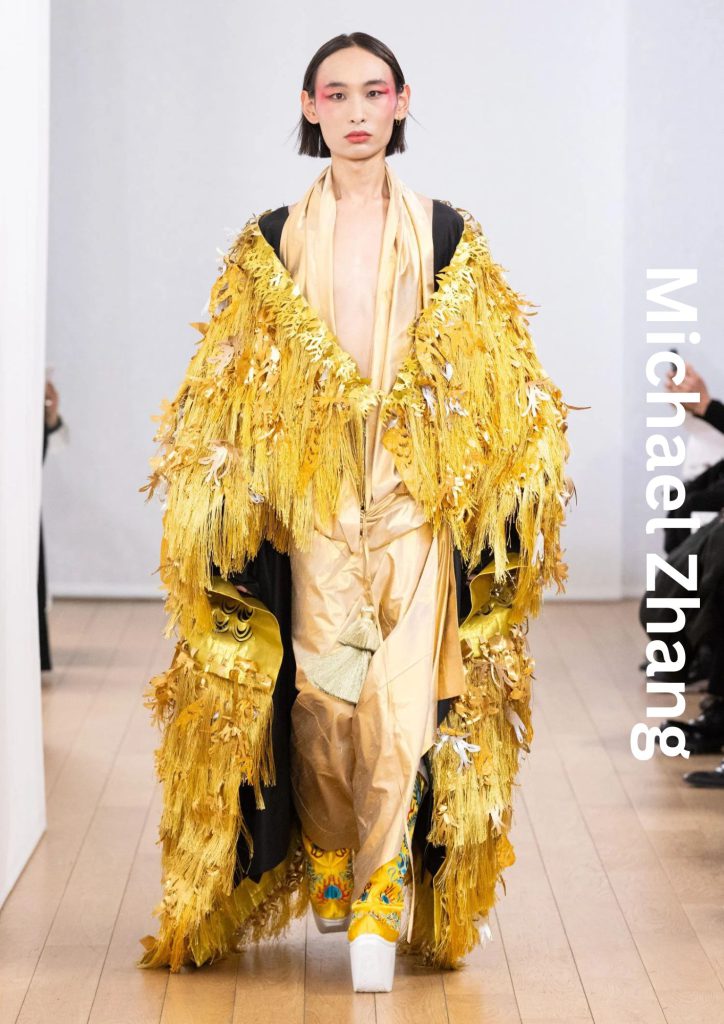
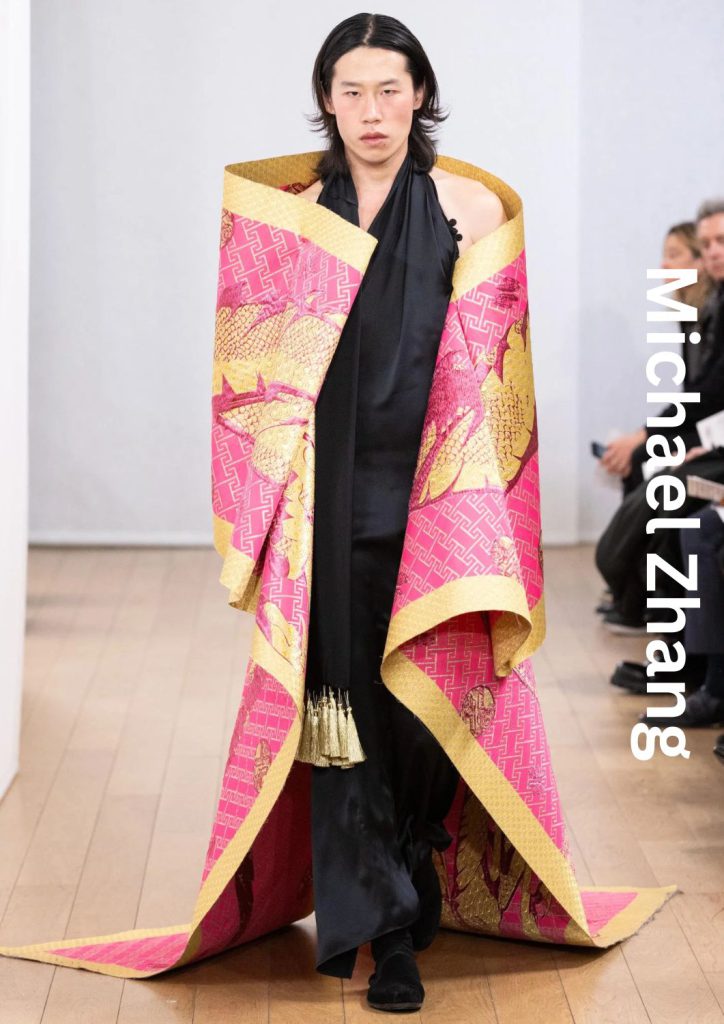
Dreams of the Pink Chamber feels regal, sensual and, as the title suggests, very pink. It’s also rich with symbolism.“This collection questions notions of authenticity and sexuality in “Chinese-ness” and diaspora,” Zhang explains. Upon first glance, silhouettes and details are taken both from traditional Chinese and Western garments. But there are plenty of hidden, personal details too. To toy with all of these elements, Zhang made offcuts of silk and jacquard from Chinese Opera companies in Beijing, “and created paper cuttings with my grandmother and artist Ding Shilun, amongst which my own sexual objects are cut and hidden, which are only revealed in movement.” Sexuality is mirrored in the cuts and “jacquard forms” of the garments. Some are donned by one single model, whereas other creations require a couple. The choice of colours is symbolic too. “Pink [is] historically only for concubines and prostitutes in Chinese culture, and is here used to challenge the rigidity of social and political adherence,” Zhang says. The designer is starting at Balenciaga, “and I would like to continue building community through my work.”
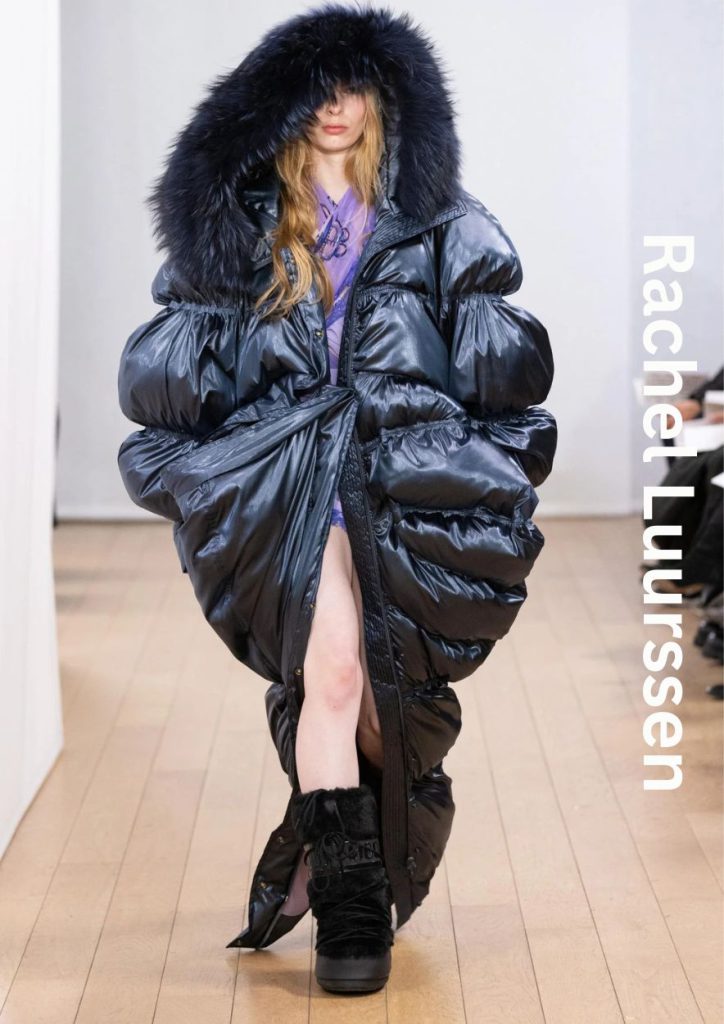
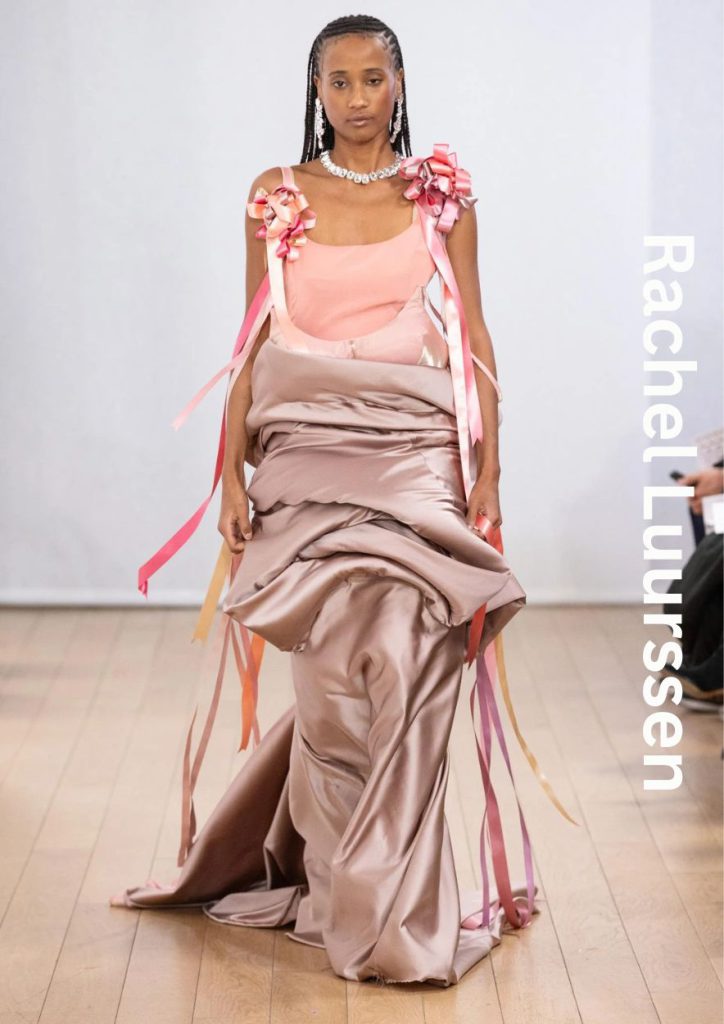
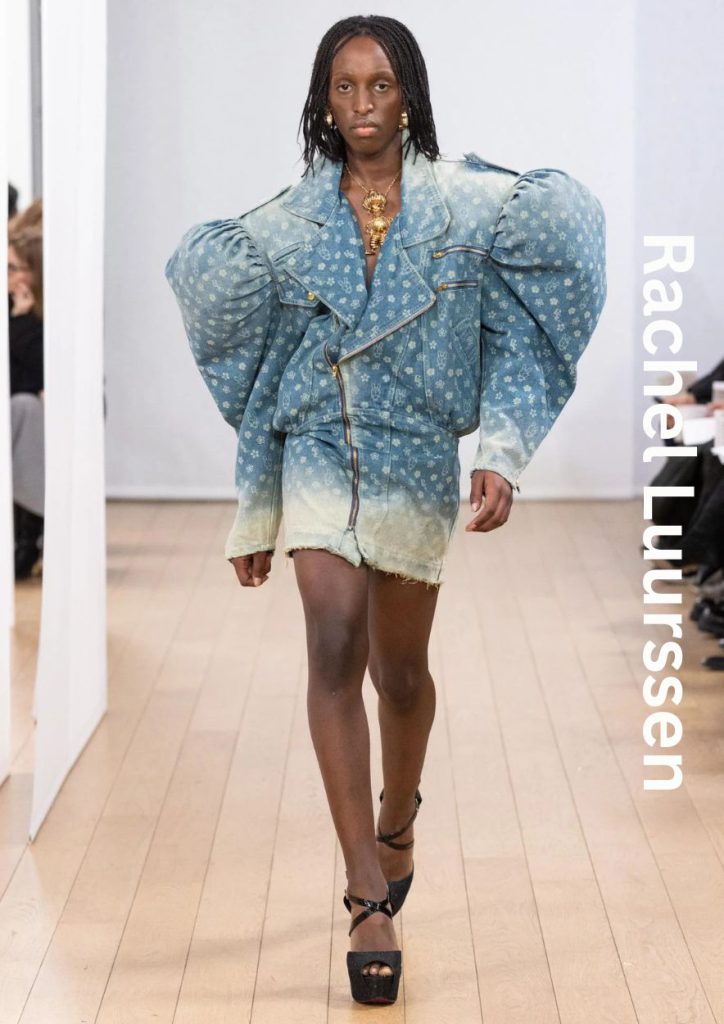
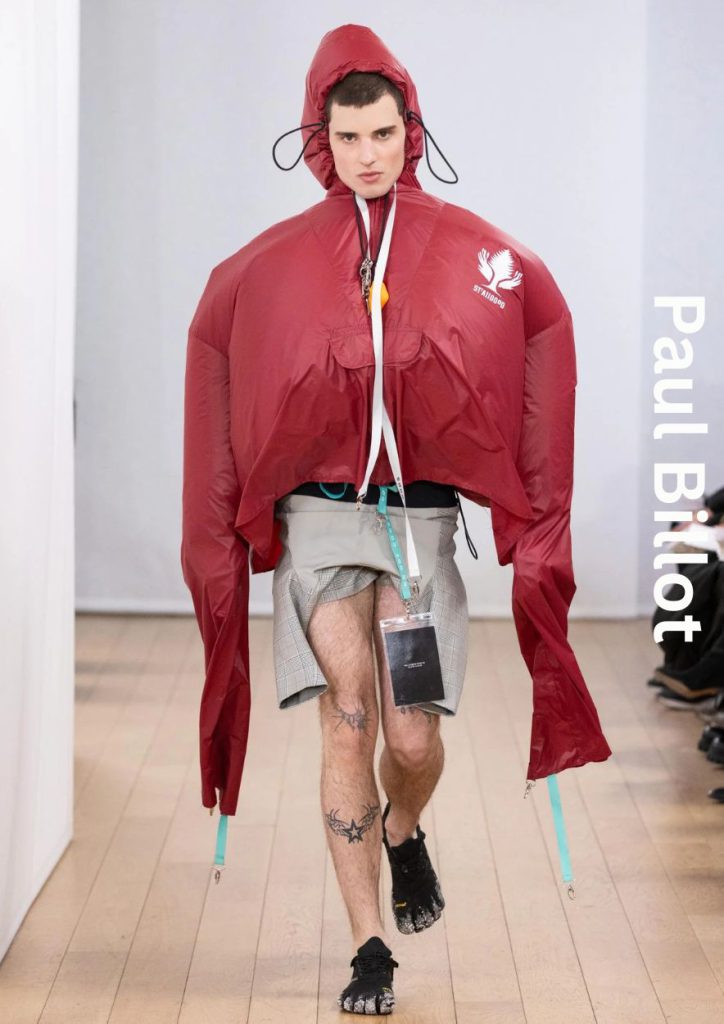
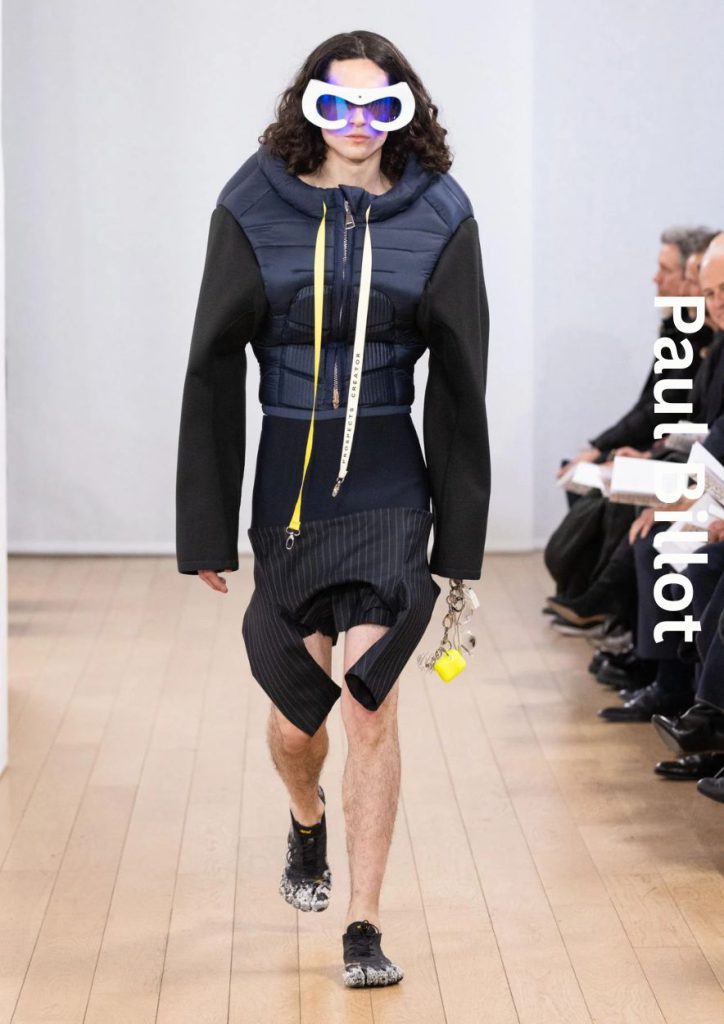
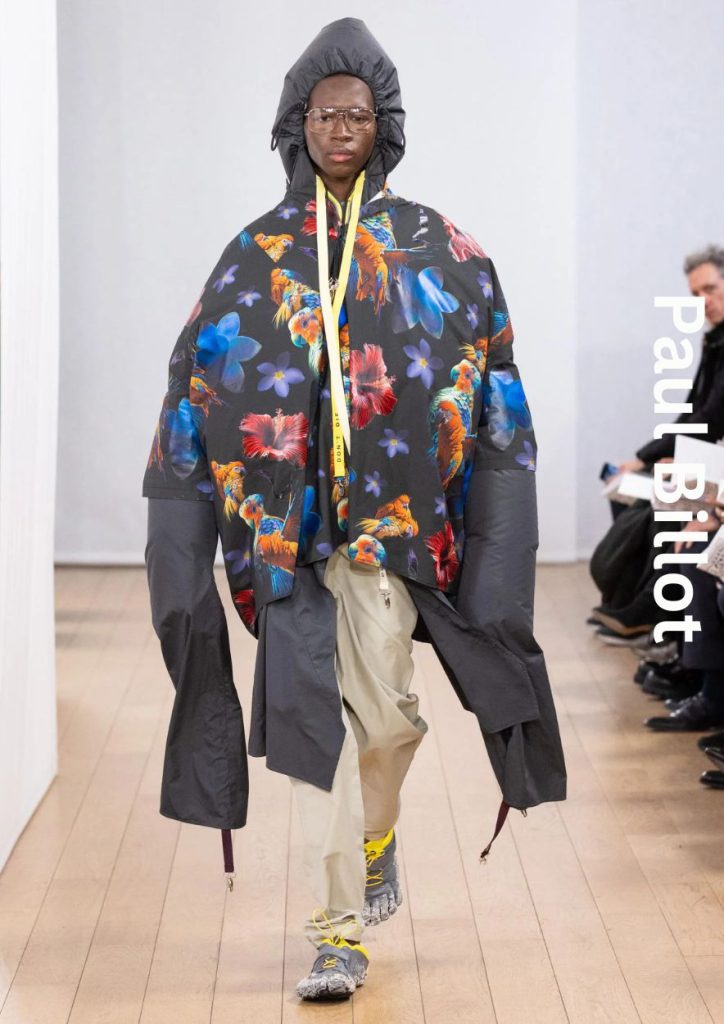
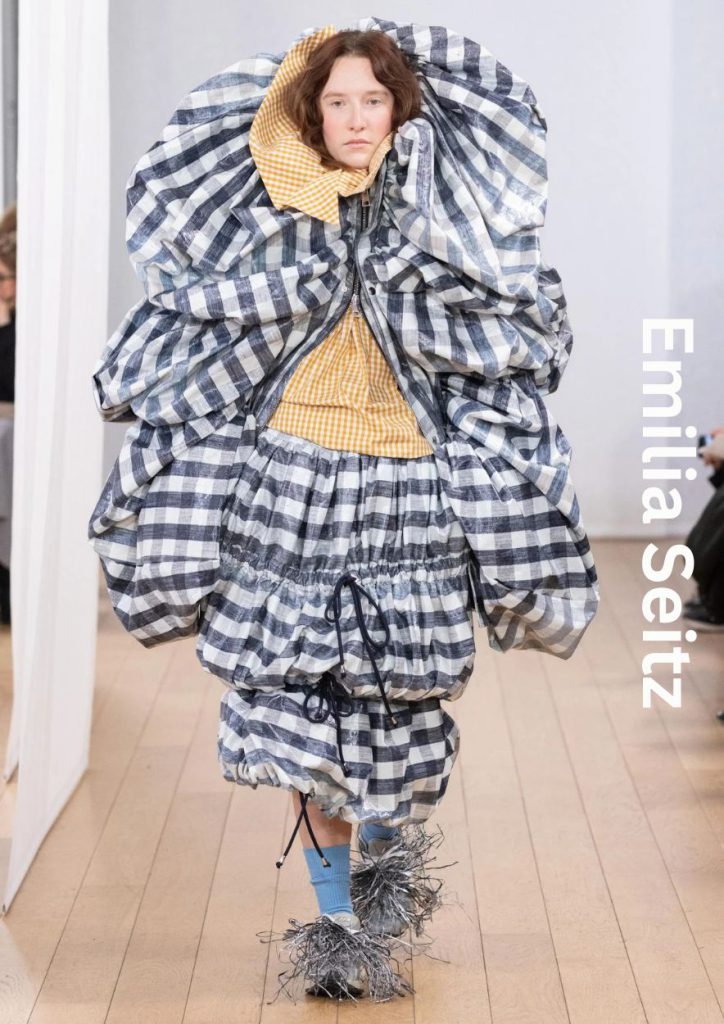
“inspired by the last summer of my childhood, spent on a farm, a time of innocence and nostalgia.” The longing for “the simple days” is reflected in the collection’s whimsical, bouncy shapes paired with a more laid-back, rural aesthetic (Barbour coats and folkloric dresses with bold silhouettes, loose trousers and shirts in natural colours). “In my design process, I wanted to blur the lines between reality and fantasy – just like childhood itself, where memories become distorted over time,” Seitz says. “For example, I chose to exaggerate the Barbour jacket, much like the folkloric costumes, to create something larger-than-life and dreamlike, much like how a child imagines the world.” To create a sense of haziness often accompanying childhood memories, Seitz worked with “fabrics and textures that mimic familiar archetypes but are actually something entirely different,” like the painted leather which created the Barbour coat’s texture.
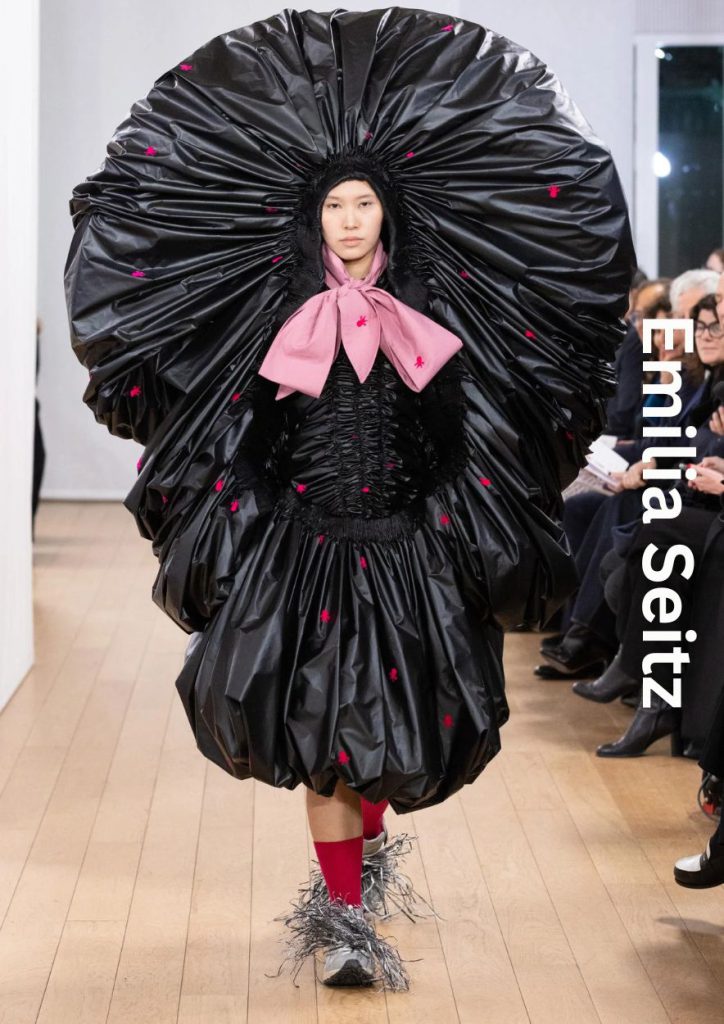
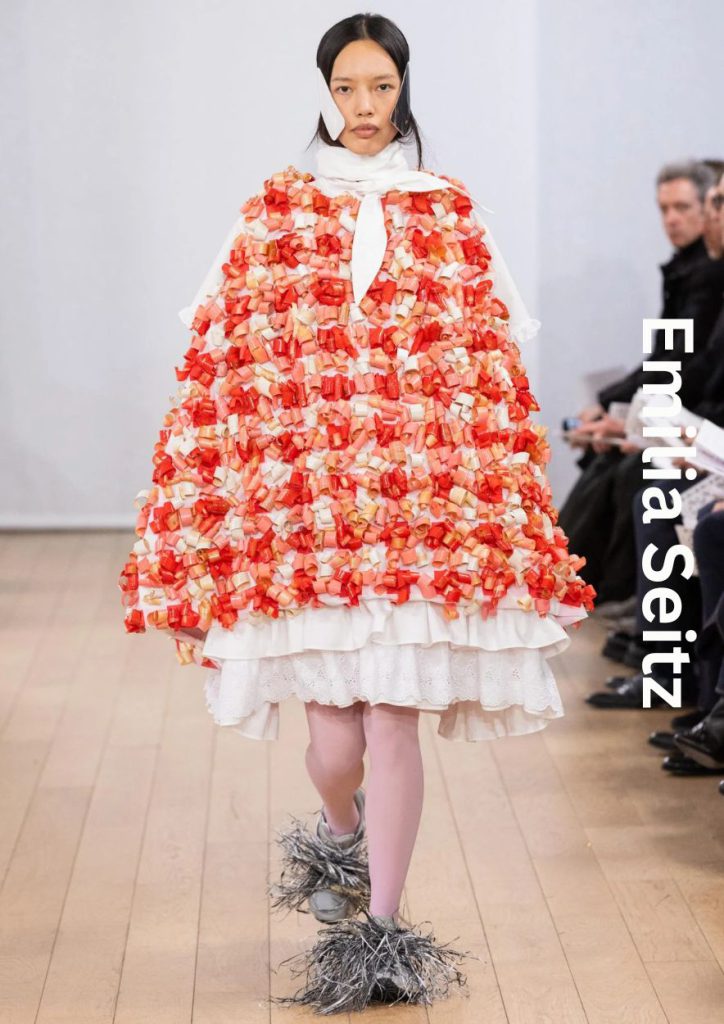
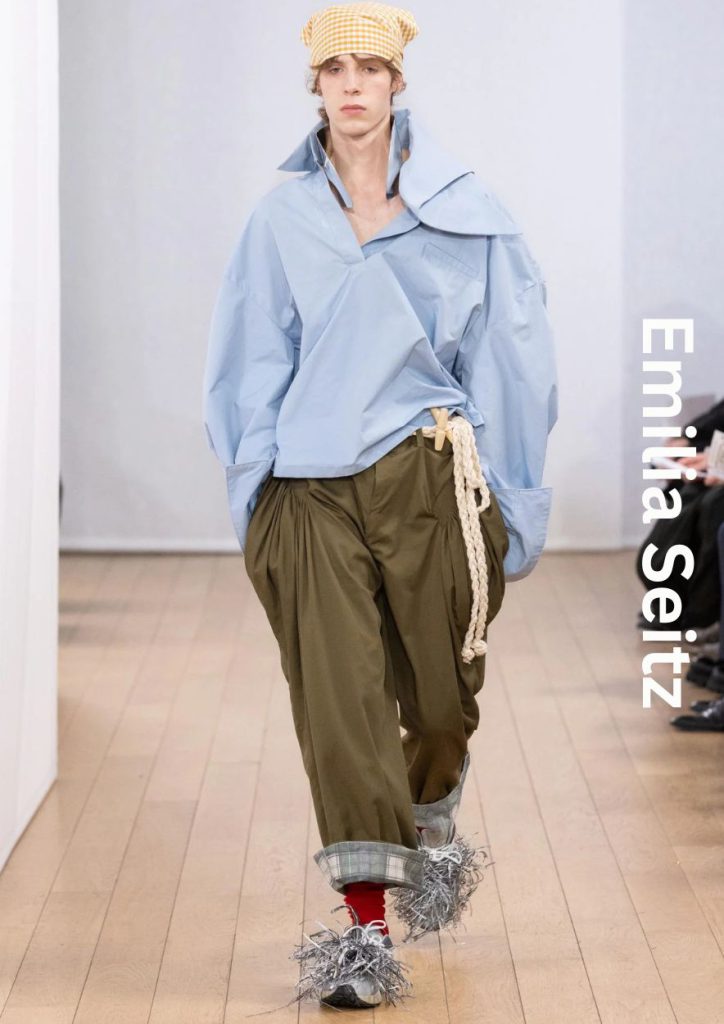
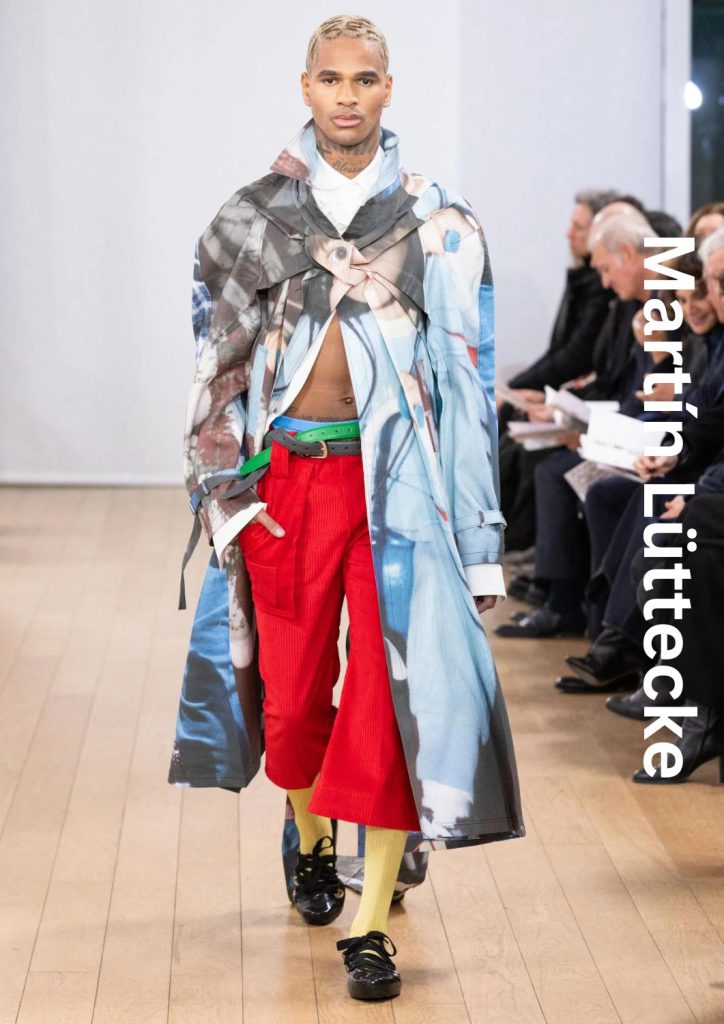
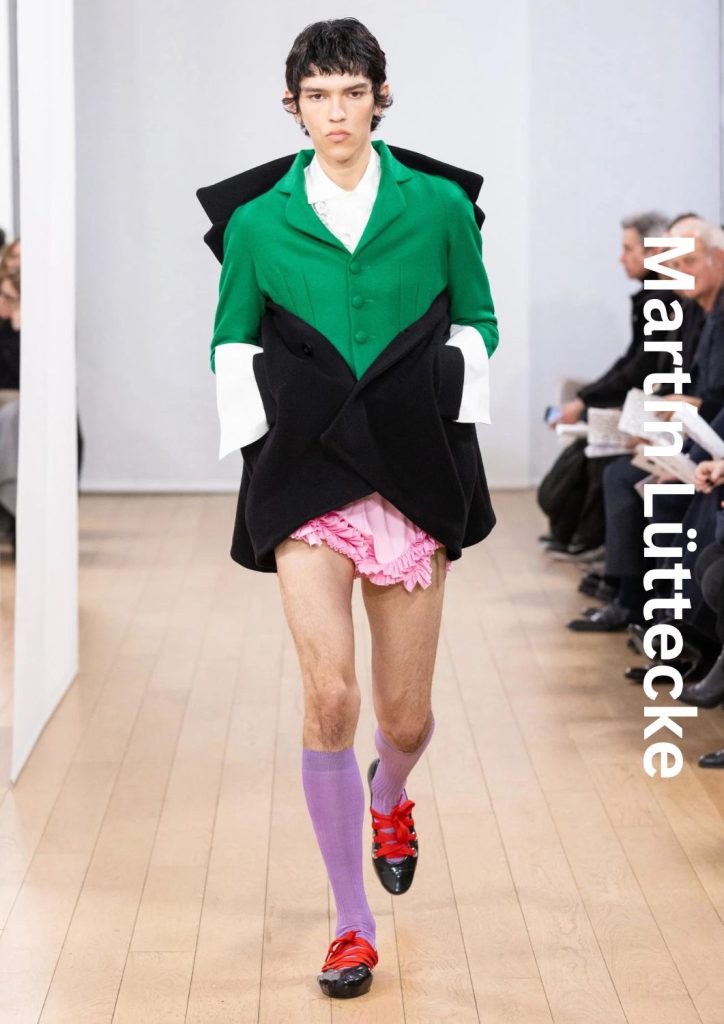
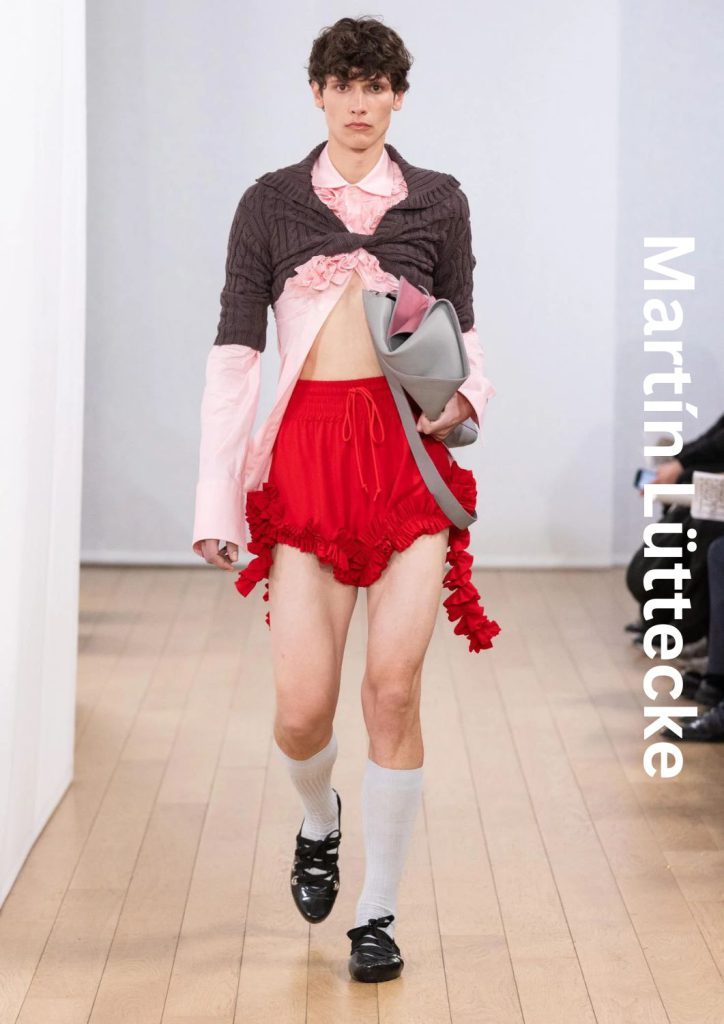
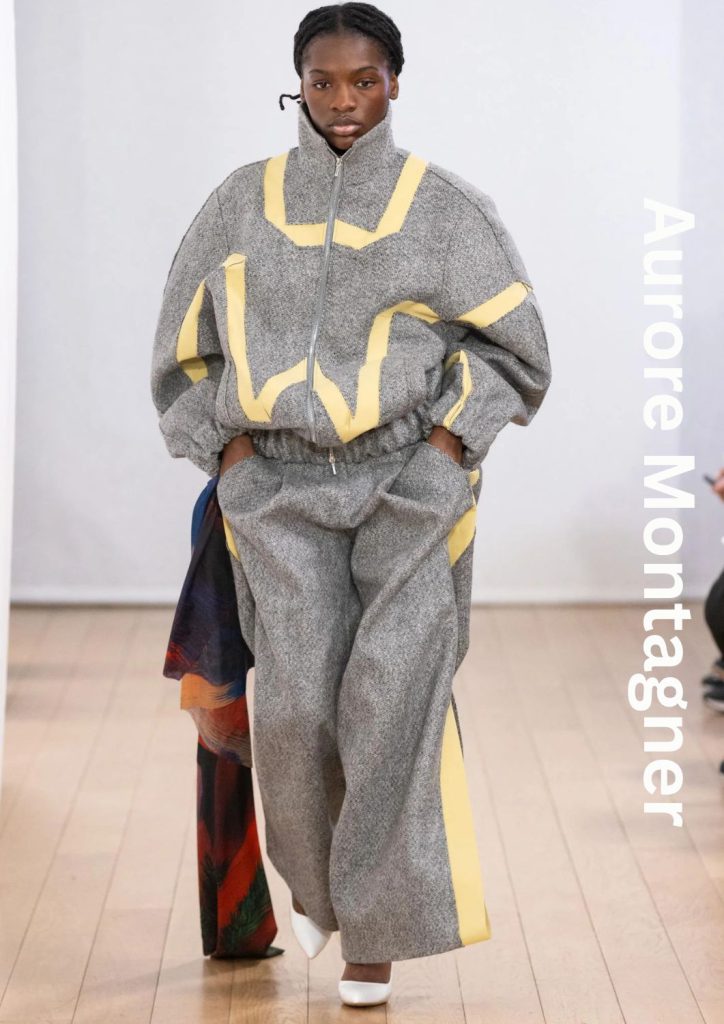
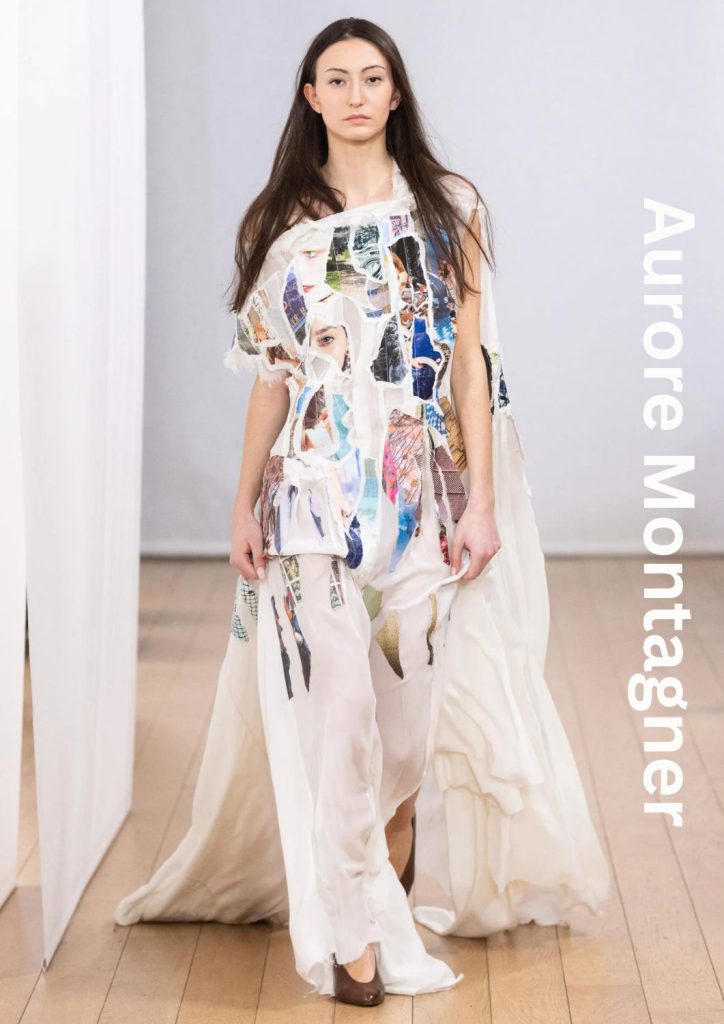
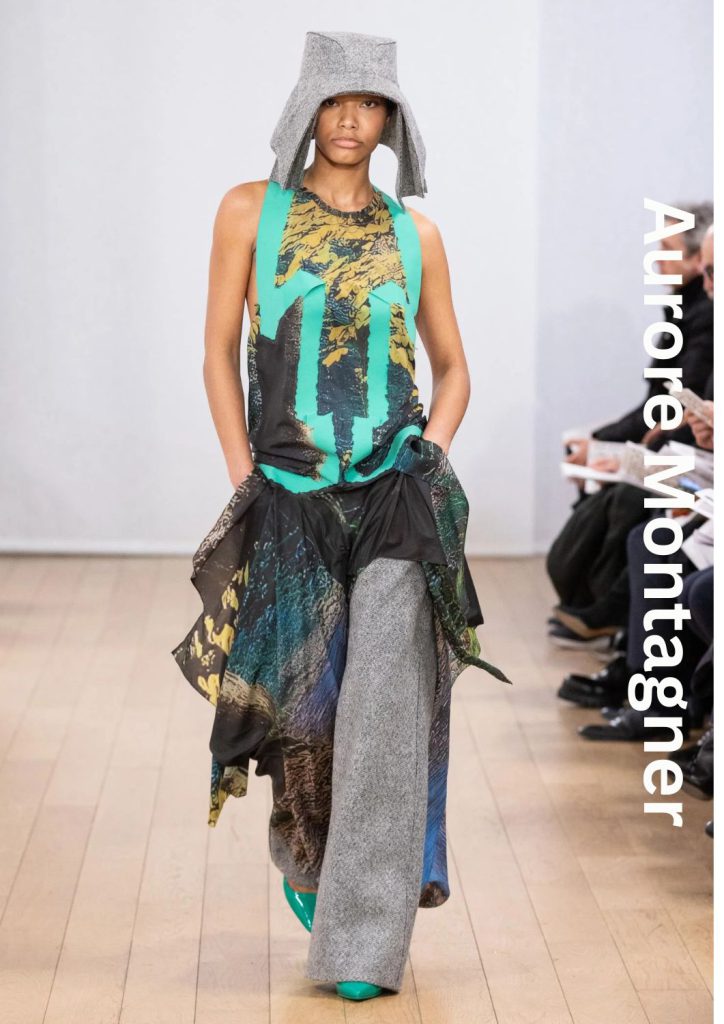
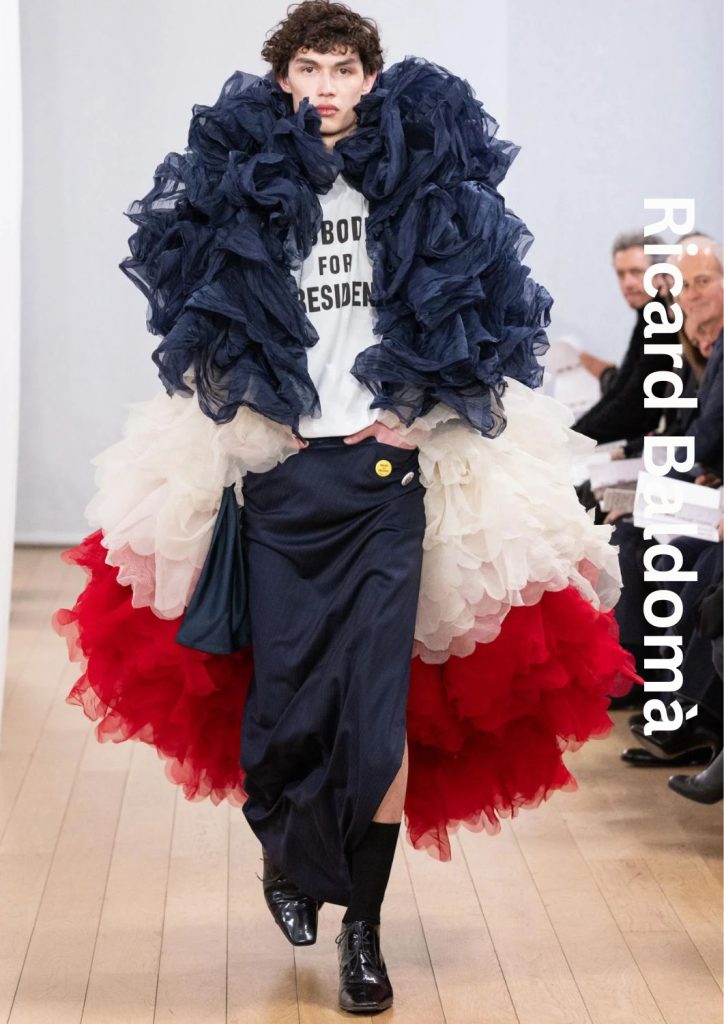
Baldomá’s collection confronts “the complexity and hypocrisy of contemporary politics, through the uniforms of corrupt leaders and the iconography of a decaying establishment.” Toying with these symbols in a fashion context, required a wide range of material development. “Beads replicate the look of shredded posters, while sublimated and laser-cut metallic palettes recreate the original printed motif – all made possible with the support of Teintures de France,” Baldomá says. “A custom jacquard, developed with Alesilk, is inspired by an original textile worn by Margaret Thatcher, subverted with elements from Antoni Tàpies’ paintings.” Meanwhile, classic wool tailoring (sourced from deadstock materials) hints at the stereotypical politician’s wardrobe.
